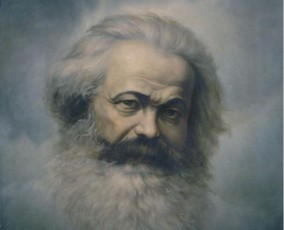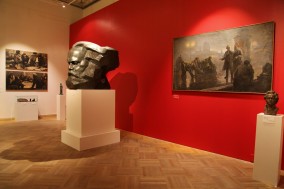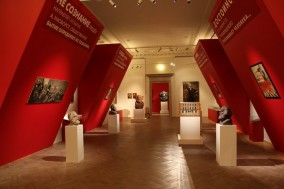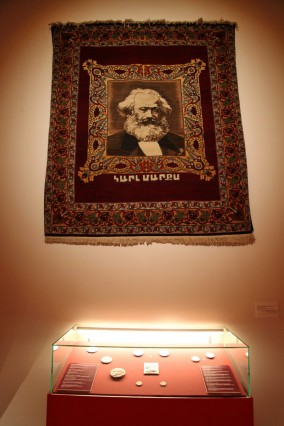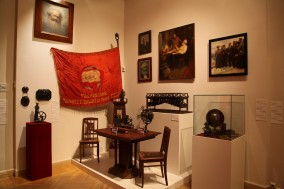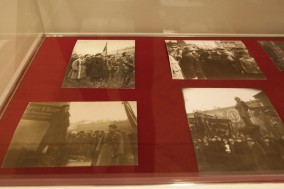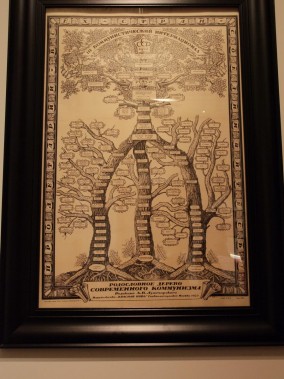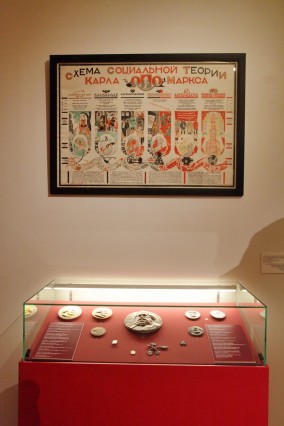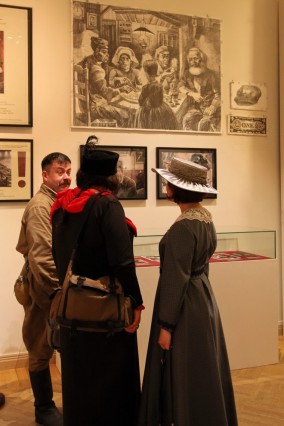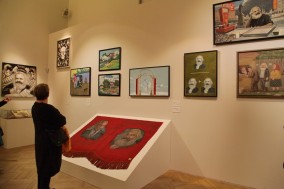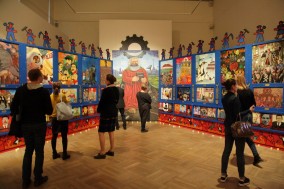Karl Marx Forever?
An exhibition on the occasion of the 200th birth anniversary of Karl Marx offers a comprehensive overview of images of the influential thinker in Russian culture and everyday life from the beginning of the 20th century till nowadays. The display includes over 100 works of fine art, household items, and archival records.
It is a well-known fact that Karl Marx never visited Russia, and none of the artists whose works are presented in the exhibition ever saw him in person. Nevertheless, Russian artists have created an extensive iconography of this person. At the beginning of the 20th century, when the Russian revolutionary movement was on the rise, Marx’s personality and ideas evoked interest and hopes of the creative intelligentsia. A spectacular example here is the portrait of Marx created by Anna Golubkina in 1905. Soon after the October revolution, many outstanding Russian artists turned to the image of Marx, Nikolay Feshin among them.
At the same time, Marx becomes one of the icons of the Communist propaganda. Images of Marx are now an integral part of Soviet everyday life. Badges, medals, postcards, posters and other items bearing the image of Marx are produced on a massive scale to commemorate numerous anniversaries. In painting, sculpture, and cinema of Social Realism, the canon of the depiction of Karl Marx is established. Later, this visual canon would be turned into a parody in Nonconformist art. Marx would become a subject of funny stories and jokes.
In contemporary art, one cannot but notice a revival of interest towards the figure of Karl Marx. Artists try to establish personal relations with the great philosopher. The variety of recent interpretations of his image includes irony, melodrama, curse, panegyric, projections of internal processes and personal histories, as well as the attempts at objectivity.
All in all, Karl Marx managed to have quite an exciting ‘afterlife’ both in the Soviet Union and Russia, which the exhibition at the Russian Museum aims to present.
The exhibition includes works from the collections of State Russian Museum, State Museum of Political History, Russian State Archive of Social and Political History (Moscow), State Museum of Political History and from private collections and studios of contemporary artists.
The exhibition is supported by Peter and Irene Ludwig Art Foundation
tags cloud
- #opening_of_a_branch
- #lecture
- #exhibition
- #virtual_exhibition
- #online_exhibition
- #online_event
- #мультимедийная_выставка
- #virtual_tour
- #masterclass
- #contest
- #занятие
- #festival
- #video_conference
- #round_table
- #conference
- #seminar
- #дошкольники
- #школьники
- #студенты
- #семья
- #серебряный_возраст
- #инклюзия
- #multimedia
- #Business_meeting_of_virtual_brances
- #The_Multimedia_Centre
- #Drammatika
- #ночьмузеевВФРМ
- #РусскомуМузею125лет
- #RussianMuseum120
- #RMcatalogues
- #Библионочь
- #книгиГРМ2019
- #игрыРМ
- #фильмыРМ
- #ночьискусствВФРМ
- #Artefact
- #100years_restorationRM
- #Peter_I_350
- #Antarctica200
- #folk_art
- #profession_restorer
- #RM_anniversary
- #SPb_anniversary
